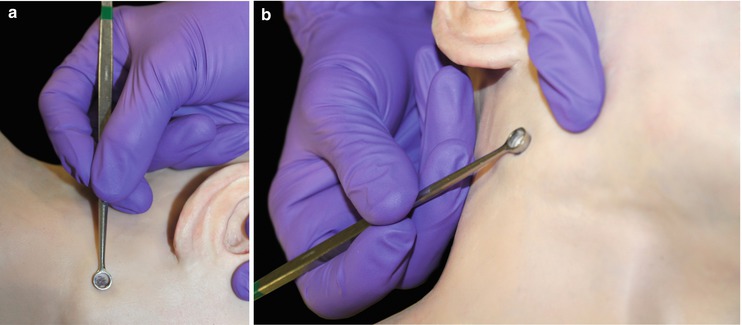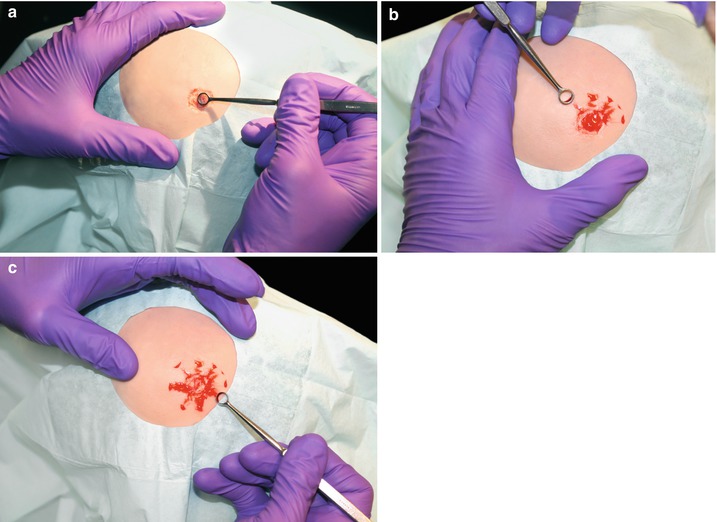Fig. 11.1
Holding the curette improperly. (a). Gripping the instrument with a fist. (b) Holding the curette at too steep an angle to the tissue

Fig. 11.2
Holding the curette properly. (a) Gripping the instrument like a pencil. (b) Holding the curette at a more acute angle to the tissue
Accidents Happen When
The lesion is not fully treated due to improper positioning of the hand or the curette.
Solution 1
Solution 3
For larger circles, treat missed arcs by starting at the half-radius point from the center to get between the rays that originated at the center of the circle (Fig. 11.3c).

Fig. 11.3
Correct curettage technique. (a) Curette starts at center of the lesion, flush with the skin. (b) Iterative adjacent radial strokes systematically treat the entire area. Note change of hand position to maintain surgeon comfort. (c) Skipped arcs (non-red) will be treated with subsequent passes
Accidents Happen When
A tumor is not curetted fully from the underlying normal dermis. Electrosurgery of cancerous tissue is less likely to achieve full hemostasis. Pooling of blood and splatter may occur.
Stay updated, free articles. Join our Telegram channel

Full access? Get Clinical Tree








